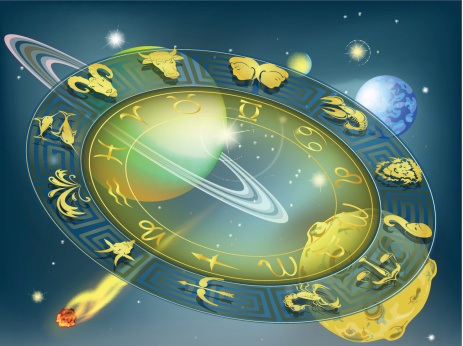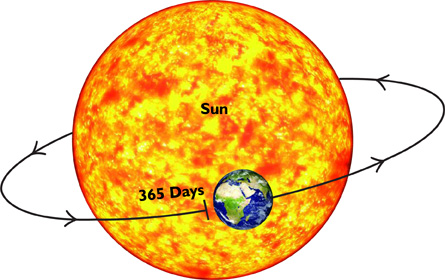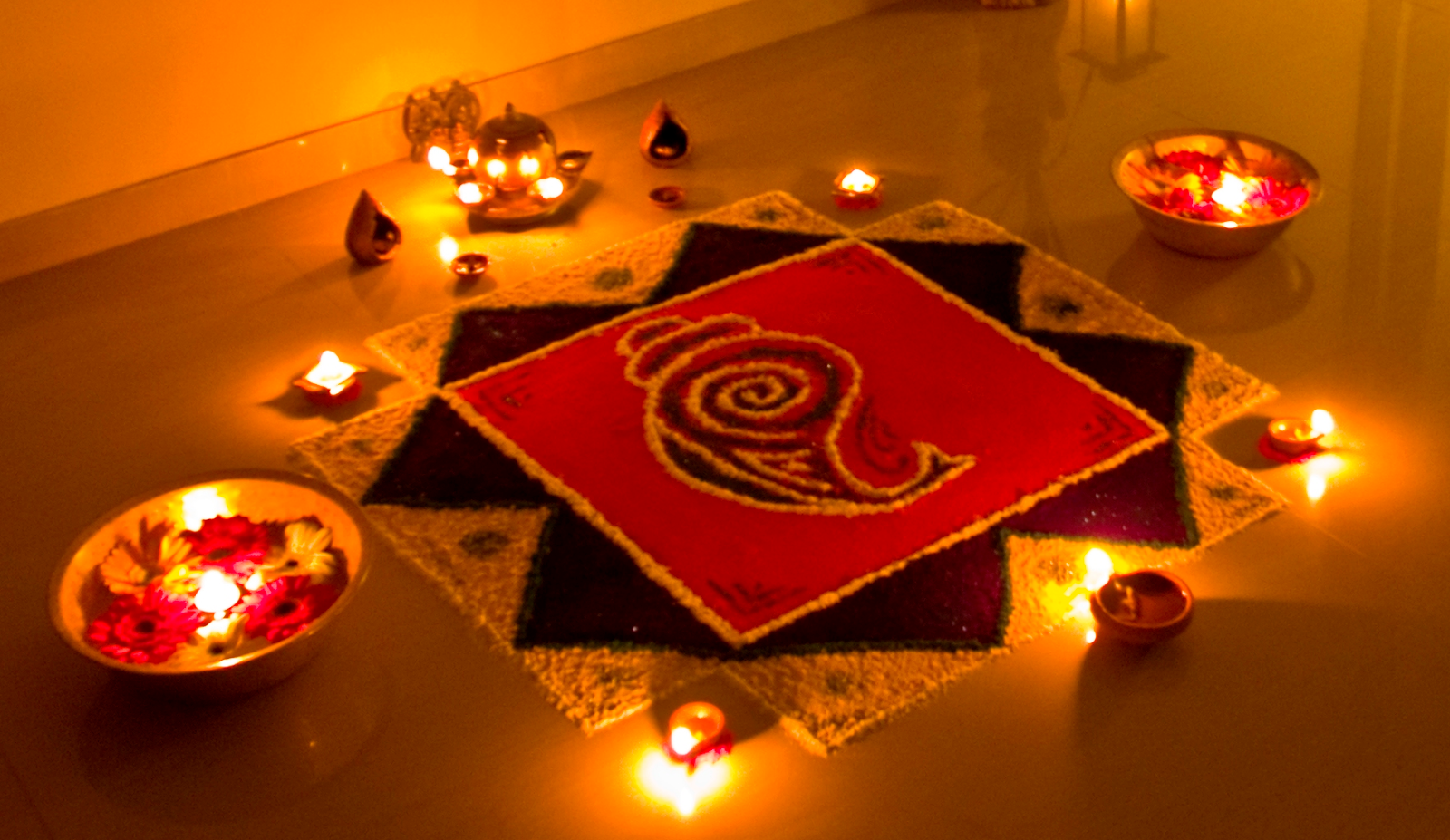The term Pañcāṅga is made up of two words- Pañc means five and aṅga means aspects. Hence, Pañcāṅga refers to the book containing details of five aspects that keep track of time. These five aspects are tithī, vāra, nakṣatra, yoga and karaṇa. In India, the Pañcāṅga is mainly used for religious purposes. However, not many of us know that the Pañcāṅga is actually ‘a mirror of the sky’ since it has detailed information of almost everything that takes place in the sky every day. I shall briefly discuss the five aspects first and then move on to main topic of this article – Sāyaṇa and Nirayaṇa Pañcāṅga.
Since ancient times, our ancestors used sky observation as a tool to keep track of time. The usual trend was to begin working with sunrise and finish by sunset. As a result, they began observing the sky after sunset and gradually learned to record the movements of the stellar objects. The easiest object for this purpose was obviously the Moon since the change in its phases was clearly visible to the naked eyes. By clearly observing the change in phases of the Moon, our ancestors deduced that the Moon takes about 30 days to return to the same phase by going through the full cycle of crescent, gibbous, full in waxing fortnight and through gibbous, crescent and new in waning fortnight. During waxing fortnight, the Moon is available in the sky immediately after the sunset and during the waning fortnight, it was not. Hence, the former was called Śukla Pakṣa (the white fortnight) – when we get white light from the Moon immediately after the sunset – while the latter was called Kṛṣṇa Pakṣa (the dark fortnight) – when there was no moon immediately after the sunset.
Let us now discuss the five aspects of the Pañcāṅga.
The first is Tithī or the phase of the Moon. Since the Moon took about 30 days to return to the same phase, each of these phases was called the Tithī. The Śukla Pakṣa began with pratipadā (the first crescent after the new Moon) and ended with Purṇimā (the full Moon). The Kṛṣṇa Pakṣa began after the Full Moon and ended on the Amāvāsyā (the new Moon) completing full month. There were two more types considered for counting month – the Purṇimānt (month ending with full moon) and the Amānta (month ending with new moon) systems. The former system begins (and ends!) after the full Moon while the latter does the same with the new Moon. Over a period of time, it was possible to observe that the Sun moves about 1° per day while the Moon moves 13° per day. Hence, the tithī was considered to get over when the angular separation between the Sun and the Moon was 12°. Moreover, the tithī for any day was taken at the tithī at the time of sunrise – even if it gets changed soon after the sunrise.

The second aspect is Vāra or the day. The duration of the full day was taken as the duration from one sunrise to the next one. Careful observation of the sky revealed the fact that excluding the Sun and the Moon, there were five bright objects in the sky that change their positions regularly. Here, regular means at regular intervals at which change of position in the sky becomes noticeable. Apart from the Sun and the Moon, five other objects were found to be moving against background of fixed nakṣatras. Together with the Sun and the Moon, each planet was considered as the Lord of the successive hours on each day by arranging them in descending order of time period of revolution. On Sunday, the Sun will be the lord of 1st, 8th, 15th and 22nd hours. Venus and Mercury will be the lords for 23rd and 24th hours respectively. The Moon will be the lord of the 1st hour of the next day and hence, that day will be called Monday. Following same logic, we get the sequence of all 7 days of the week. These were called graha and they were considered for naming days along with the Sun and the Moon.
The third aspect is Nakṣatra. By definition, it means ‘na kṣarati iti nakṣatra’. The path of the Moon in the sky over a period of one full month (which also happens to be annual path of the Sun) was divided into 27 equal parts. This number 27 comes from the fact that the Moon takes about 27 days to complete one revolution around the Earth. Hence, the Moon remains in one nakṣatra per day on an average. This logic helps us in nomenclature of the lunar months. Out of 27, only 12 nakṣatras are selected for the nomenclature of the lunar months depending on the position of the full Moon in the vicinity of that particular nakṣatra (Synodic lunar month (either amānta or purṇimānt) has about 29.5 days making 12 such complete lunar months possible in a year. This means number of days in a lunar year will be about 354 that will fall short of solar year by about 11 days every year. Having an additional month (intercalary month or adhik māsa) after about every 3 years covers this gap and ensures that festivals won’t get deviated too much. Hence, having 12 nakṣatras corresponding to the full Moon out of 27 possible ones is a logical choice. Having 13 nakṣatras won’t be useful since it will lead to difficulties in synchronizing lunar months with solar year). So, if the full Moon occurs near Citrā, the corresponding lunar month is Caitra. If it happens near Aśvinī, the lunar month would be Aśvin and so on. Most of the nakṣatras have a specific bright star in their vicinity that is known as yogatārā (the identifying star) for that particular nakṣatra.
The fourth aspect is Yoga. One yoga is complete when the total angular distance covered by the Sun and the Moon is 13°20’ or 800’. This angular separation is equivalent to the span of a nakṣatra. Hence, yogas are also 27 in number and mainly used for religious purposes, such as Gṛha-parvesh, muhurta for marriage, joining new job etc.
The fifth aspect is Karaṇa. It is defined as the half of a tithi. As a result, each tithi consists of two karaṇas. These are also used mainly for religious purposes.
In the above image, the top of the page shows Śālivāhan Śaka number (शालिवाहन शके १९४४), name of the saṃvatsar (शुभकृतनामसंवत्सर), current ayana (उत्तरायण) and ṛtu as per lunar calendar (वसंतऋतु), the present lunar month (वैशाख) and the fortnight (शुक्लपक्ष). Note that the actual solar ṛtu is Grīṣma. It also mentions Gregorian (मे 2022), Islamic (हिजरी १४४३) and Vikram Saṃvat (संवत् २०७८). Few column headers are highlighted that are explained below: -
The first column (highlighted in red) shows the tithi no. (ति = तिथि) and the day (वा = वार). The second column (highlighted in green) shows the time (क. मि. = कलाक मिनिटे means hours and minutes) when tithi ends. These are shown with respect to the local sunrise and any number more than 24 in hours column indicates that the time is past midnight. For example, २७ | २६ (27 | 26) means 03:26 AM local time in early morning. In some cases, tithi begins before sunrise and ends after the next sunrise. In such cases, the word अहोरात्र is shown. Such instances are known as वृद्धितिथि (additional tithi).
The third column (highlighted in blue) shows the nakṣatra (न = नक्षत्र) and the time (क. मि.) when that nakṣatra ends. Similar to tithi, nakṣatras too can continue for two sunrises as अहोरात्र.
The next column (highlighted in orange) shows similar details for yoga.
The fifth (highlighted in violet) (दिवा करण) and the sixth (highlighted in yellow) (रात्रौ करण) shows the similar details for karaṇa. Since karaṇa is equivalent to half tithi, the fifth column shows the end time for karaṇa during the day and the sixth one shows the same during night.
The next column (highlighted in light green) (दि = दिनमान) shows the duration of the day. It is followed by the local sunrise (र उ = रवि उदय) and sunset (र अ = रवि अस्त) times in the following columns (highlighted in dark pink). The duration between sunrise and sunset is the duration of the day.
The next column (highlighted in pink) (चंद्र राशीप्रवेश) shows the time when the Moon changes its zodiac sign. The last column (highlighted in light brown) (इं = इंग्रजी दिनांक) shows dates as per Gregorian calendar. Apart from this, there is a description column located at the extreme right that shows important events for that particular day. At the top of this column, duration of night (रात्रिमान) is shown along with the Ayanāṃśa (अयनांश). Ayanāṃśa is the angular separation along the ecliptic between vernal equinox. The zodiacs defined in most of the Nirayaṇa Pañcāṅga consider this point as the beginning of Aries and Aświni nakṣatra. For this reason, it is sometimes called मेषादि or अश्विन्यादी.
The Ayanāṃśa can also be defined as the angular separation between autumnal equinox and the star Spica. At present, it is 24°09’55” indicating that vernal equinox has shifted (due to precession of equinoxes) to the west of First point of Aries by this amount. This value keeps changing by about 50.2” every year due to the precession of equinoxes.
The table on the bottom left shows the end times for every quarter of nakṣatra when the Moon changes its position from one quarter to the other. However, this is shown as per IST (Indian Standard Time) (भारतीय प्रमाणवेळ)
Moreover, there are few interesting methods of preparation of Pañcāṅga – Sāyaṇa and Nirayaṇa. The former method considers the precession of equinoxes and considers vernal equinox as the ‘First point of Aries’. This method ensures that the calculations are in synchronization with the cycle of seasons. But it is not useful for observing the night sky. The latter uses a different ‘First point of Aries’ – (either the star Zeta Piscium or the point diametrically opposite to the star Spica) and it’s independent of precession. This method is not in synchronization with the seasons cycle but useful for sky observation. We shall discuss them in details in the next article.
(to be continued….)
Mr. Sameer Barve, Insurance Professional, Mumbai


 Mr. Bishnoi did Vedic Acharya as Guru-Shishya Parampara in Jodhpur, Rajasthan. He worked towards expanding his knowledge in divine science of Vedic Astrology, formulated a five-rule theory of Vedic Astrology, conducted workshops on understanding the various important aspects in life through Vedic astrology and also on ancient Bhrigu-Nandi Nadi Samhita. Honored by many organizations as a Vedic healer & Vedic Vaastu expert. He is visiting professor of many Astrological institutions in major Indian cities and has published several articles in Jyotish magazines & journals.
Mr. Bishnoi did Vedic Acharya as Guru-Shishya Parampara in Jodhpur, Rajasthan. He worked towards expanding his knowledge in divine science of Vedic Astrology, formulated a five-rule theory of Vedic Astrology, conducted workshops on understanding the various important aspects in life through Vedic astrology and also on ancient Bhrigu-Nandi Nadi Samhita. Honored by many organizations as a Vedic healer & Vedic Vaastu expert. He is visiting professor of many Astrological institutions in major Indian cities and has published several articles in Jyotish magazines & journals.



 Dr. Mishra is National Coordinator of Jyotish at Mukta-Swadhyaya-Peetham (Institute of Distance Education), Rashtriya Sanskrit Sansthan, New Delhi
Dr. Mishra is National Coordinator of Jyotish at Mukta-Swadhyaya-Peetham (Institute of Distance Education), Rashtriya Sanskrit Sansthan, New Delhi